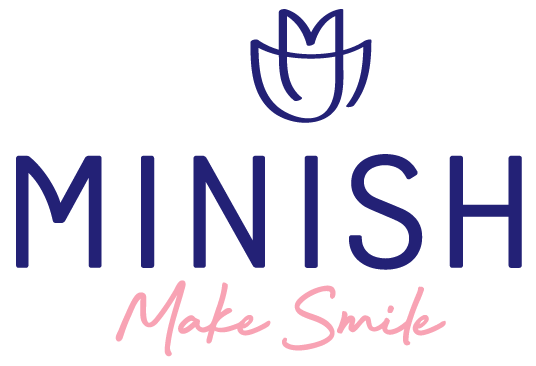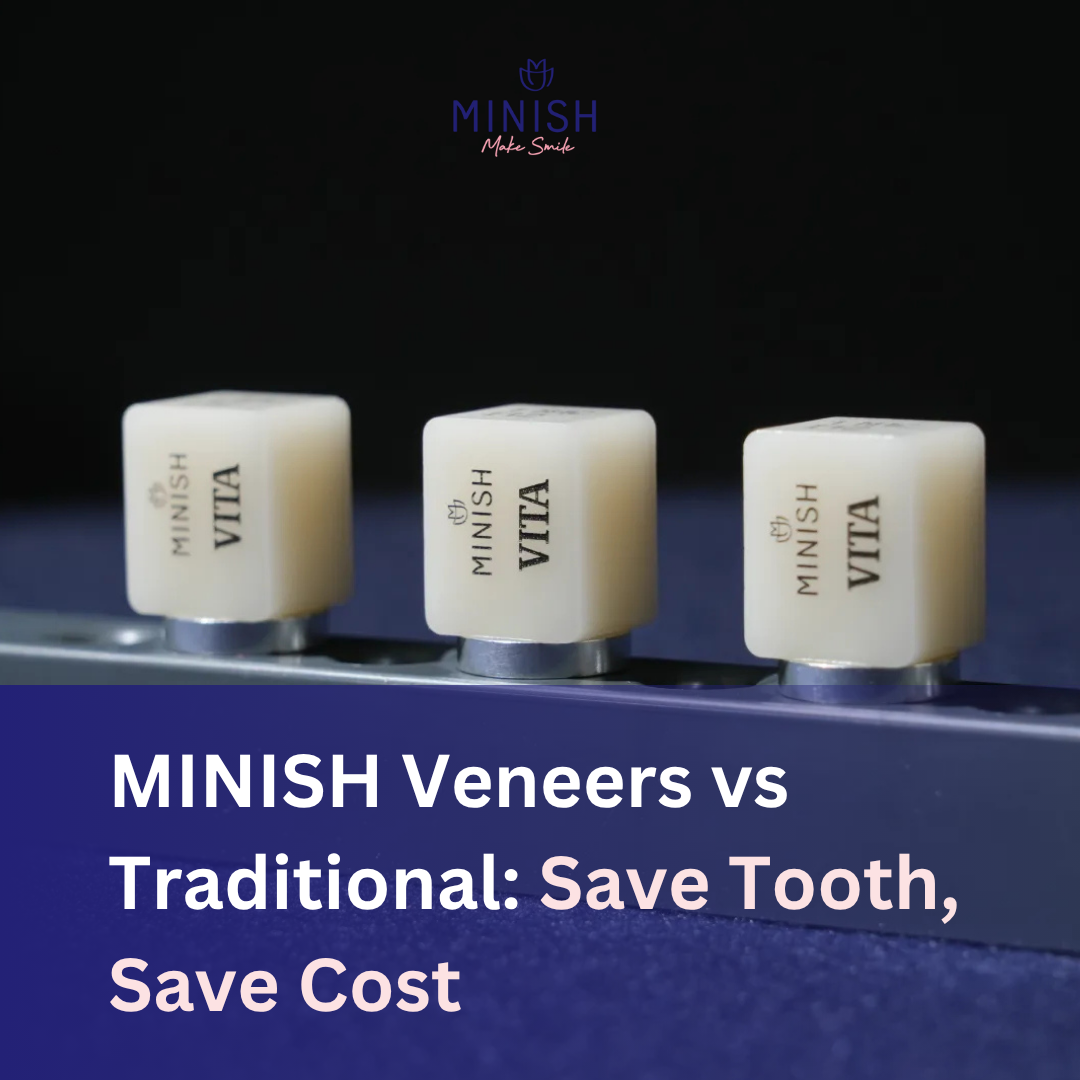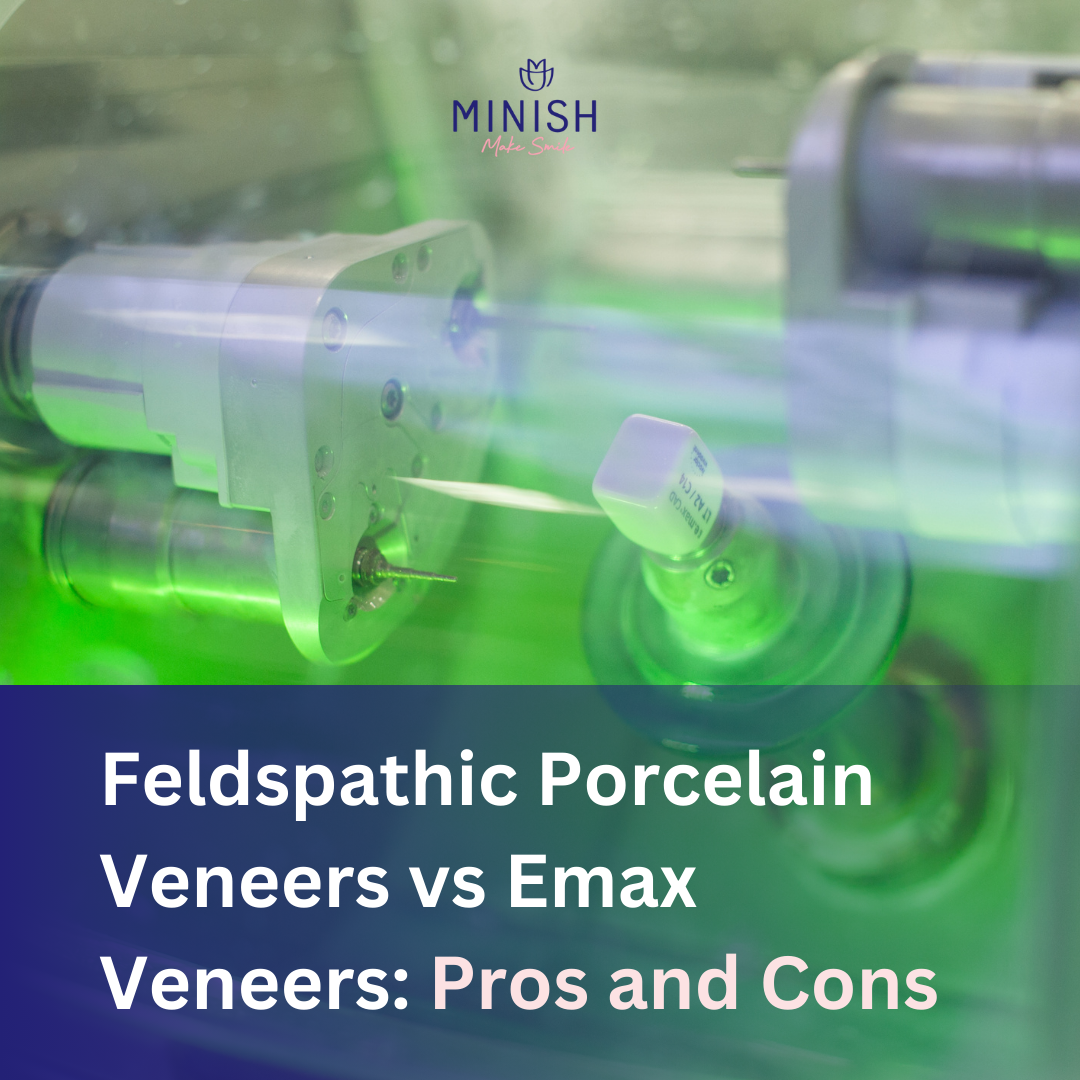What is Zirconia Crown and Veneers?
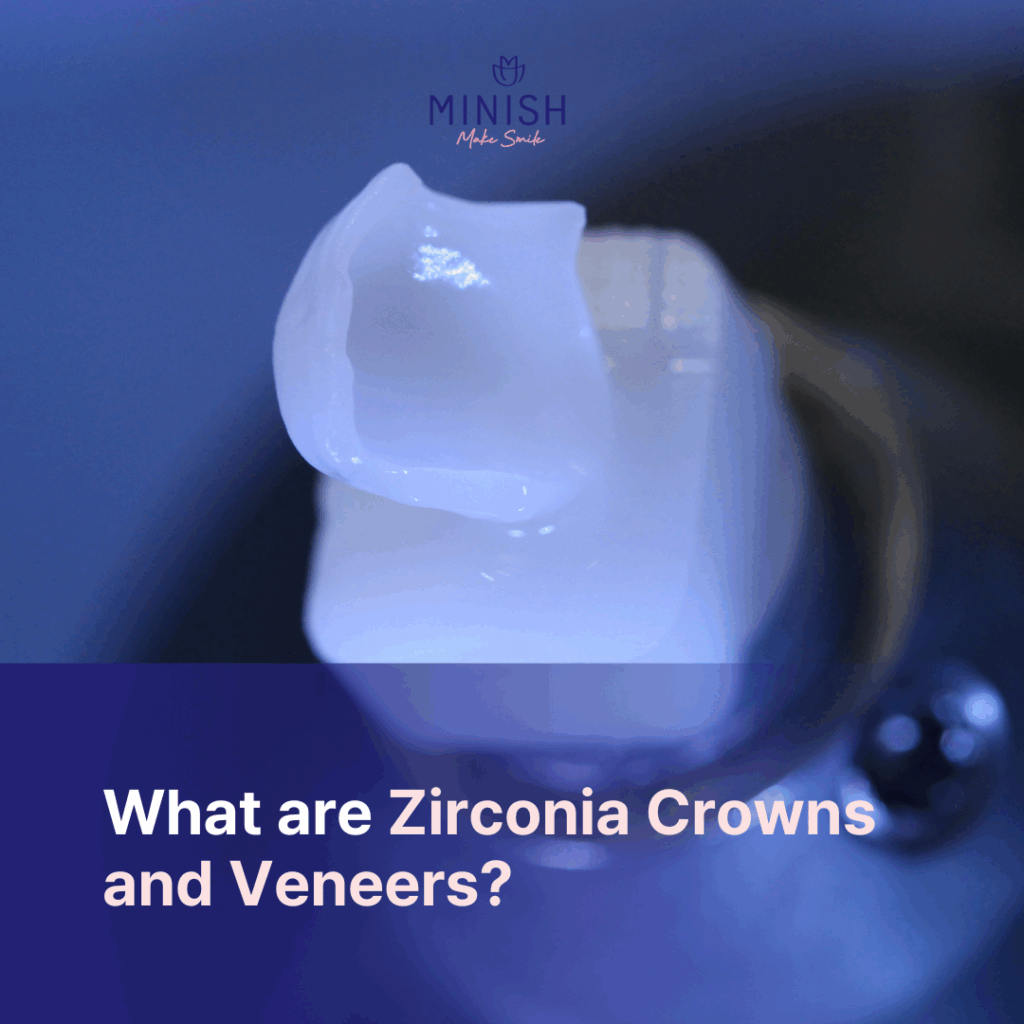
In cosmetic and restorative dentistry that focuses on oral health, tooth integrity, and saving natural teeth, few materials match the strength, versatility, and wide range of applications of zirconia. Whether used in crowns, bridges, or veneers, zirconia offers an ideal balance of durability, aesthetics, and biocompatibility. Like any dental material, however, zirconia has its pros and cons, and its suitability depends on the clinical case, whether that’s restoring a heavily damaged molar, creating a long-span bridge, or delivering a high-strength cosmetic solution.
Zirconia veneers exist, but they differ fundamentally from minimally invasive Veneers. Zirconia is a material that delivers strength and durability as its primary benefits. This blog will explore zirconia’s advantages, limitations, and most common use cases.
What is Zirconia?
Zirconia (zirconium dioxide) is a high-strength ceramic widely used in medical and dental applications. In dentistry, it is prized for:
- Extreme strength (1,000+ MPa)
- Natural color and translucency
- Non-reactivity and biocompatibility
- Resistance to fracture, chipping, and corrosion
Initially, dentists used zirconia as a metal-free alternative for crowns and bridges. Now, it’s a top choice in cosmetic dentistry, particularly for patients with metal allergies or strong bites. Many dental clinics also recommend zirconia as part of comprehensive dental care plans because it offers durability and aesthetics in one innovative dental solution.
What Is a Zirconia Crown?
A zirconia crown is a full-coverage tooth restoration crafted from solid or layered zirconia. Its uses include:
- Repair severely damaged or decayed teeth
- Protect teeth after root canal treatment
- Restore dental implants or serve as bridge anchors
- Maintain proper spacing and support for surrounding teeth
Types of Zirconia Crowns include:
- Full-contour zirconia (monolithic): Strongest form, ideal for molars
- High-translucency zirconia: Designed for anterior teeth needing better aesthetics
- Layered zirconia: Combines a zirconia base with porcelain overlay for added translucency
Why Dentists Choose Zirconia Crowns
According to Colgate and dental labs like Alien Milling Technologies:
- Zirconia crowns are metal-free, eliminating allergic reactions or gray lines
- They withstand high biting forces without cracking
- They are gentle on opposing teeth when polished properly
- Their longevity (often 10–15 years) rivals or exceeds other crown types
Zirconia Crowns and Veneers
For decades, zirconia has been one of the most popular materials in restorative and cosmetic dentistry, valued for its exceptional strength, resistance to wear, and biocompatibility. Its ability to withstand high chewing force makes it a preferred choice for crowns, bridges, and even certain veneer cases, particularly for patients who grind their teeth, have a heavy bite, or need to restore damaged teeth. Zirconia restorations are also less prone to staining or chipping, providing long-lasting performance and a stable aesthetic over time.
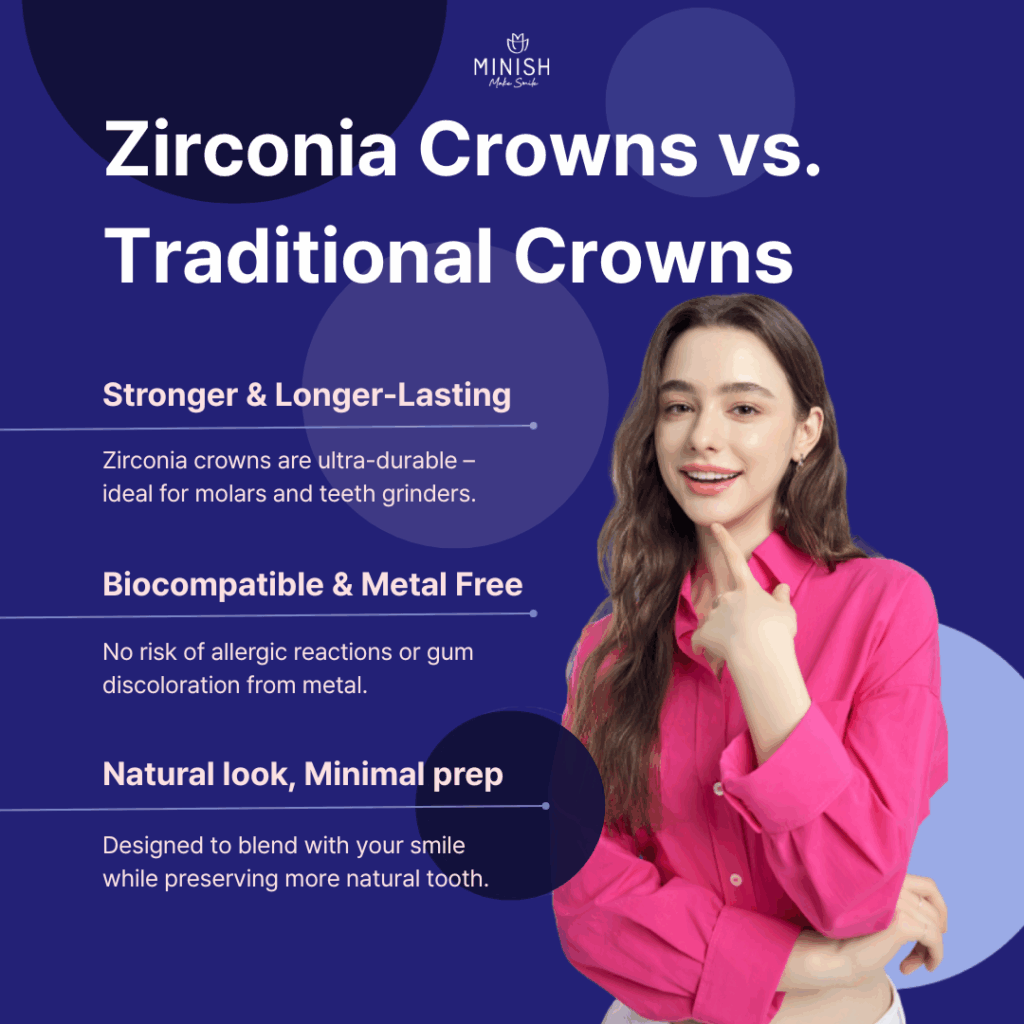
The ideal candidates for zirconia include patients seeking durable posterior restorations, long-span bridges, implant-supported crowns, or rarely cosmetic veneers in high-stress areas. Some cases may require tooth shaving to ensure proper fit and function, especially for full-coverage restorations.
However, zirconia is not without its drawbacks. It is typically less translucent than other ceramics, which may lead to a more opaque appearance if not expertly crafted. Achieving a natural look requires exceptional lab work and precise preparation.
Patients seeking maximum translucency and a lifelike finish often choose alternative ceramic materials such as feldspathic porcelain or lithium disilicate.
Alternatives to Zirconia Veneers
While zirconia remains a leading choice, it is just one of several ceramic-based materials used for veneers. Feldspathic porcelain offers the most natural translucency but is best suited for lower-stress cases. Lithium disilicate provides a balance of strength and beauty, making it a versatile choice for many clinical cases. Each material has distinct pros and cons: zirconia excels in strength but sacrifices some translucency; feldspathic porcelain provides the most natural light diffusion and enamel-like characteristics.
MINISH Veneers represent a completely different approach. Developed at MINISH Dental Hospital and taught through the Minimally Invasive Veneer Course, these veneers use non-zirconia biomimetic material that can be fully bonded chemically to natural teeth, focusing on preserving minimal tooth structure rather than emphasizing maximum strength.
This means their strength more closely resembles the durability of natural enamel (much weaker than zirconia) in order to allow for a more natural wear pattern and improved bonding integration. With an ultra-thin profile of 0.1 to 0.2mm and a no-prep/minimal-prep application process, MINISH Veneers aim to preserve healthy tooth structure while achieving a highly aesthetic, natural-looking result.
Zirconia vs. MINISH Veneers: What’s the Difference?
| Feature | Zirconia Crown | MINISH Veneers |
| Material | Solid zirconium dioxide | Ceramic-based biomimetic material |
| Aesthetics | Natural, but slightly opaque if unlayered | High translucency, mimics enamel light reflection |
| Strength | Very high (1000–1200 MPa) | Weaker on its own, but bonded, it closely mimics natural teeth (~60–150 MPa). |
| Tooth Preparation | Often requires more reduction | No-prep/minimal-prep approach |
| Durability | Highly resistant to fracture and wear | Designed to wear naturally like real teeth |
| Ideal Cases | High-bite force, bruxism, molars, long-span restorations | Cosmetic smile design, enamel preservation focus |
Choosing the Right Material for Every Smile
Zirconia has earned its reputation as a dependable, high-performance material in dentistry, offering a unique combination of strength, durability, and biocompatibility. It remains an excellent choice for dental crowns, bridges, and veneers in high-stress situations, and many patients appreciate its long-term reliability and appearance similar to natural teeth.
However, advances in dental materials have expanded the options available to both patients and providers. State-of-the-art alternatives such as feldspathic porcelain, lithium disilicate, and MINISH Veneers provide additional flexibility, allowing for more personalized treatment planning based on the patient’s individual needs, aesthetic goals, and tooth preservation priorities.
With the right knowledge and a broad set of tools, dental professionals can choose the ideal material for each case, ensuring patients receive the best possible functional and aesthetic outcomes.
Frequently Asked Questions (FAQs)
Yes. Zirconia is significantly stronger, making it ideal for molars or patients with heavy bite force.
Absolutely. Zirconia is metal-free and hypoallergenic.
When fabricated with expertise, they do. However, alternatives such as MINISH Veneers use high-translucency ceramic that mimics the optical properties of enamel.
Zirconia crowns and veneers can last 10–20 years with proper care.
Check Out Our Other Blog Posts!
Looking for more insights on cutting-edge dental technology, minimally invasive treatments, and tips for preserving natural tooth structure? Explore our latest blog posts—from expert advice by Dr. Kang to real success stories and insights from MINISH Dental Hospital.
Whether you’re a dental professional or a curious patient, you’ll find valuable info on everything from tooth integrity, oral health, and innovative dental solutions to the science behind MINISH Veneers.
👉 Stay informed. Stay inspired.
